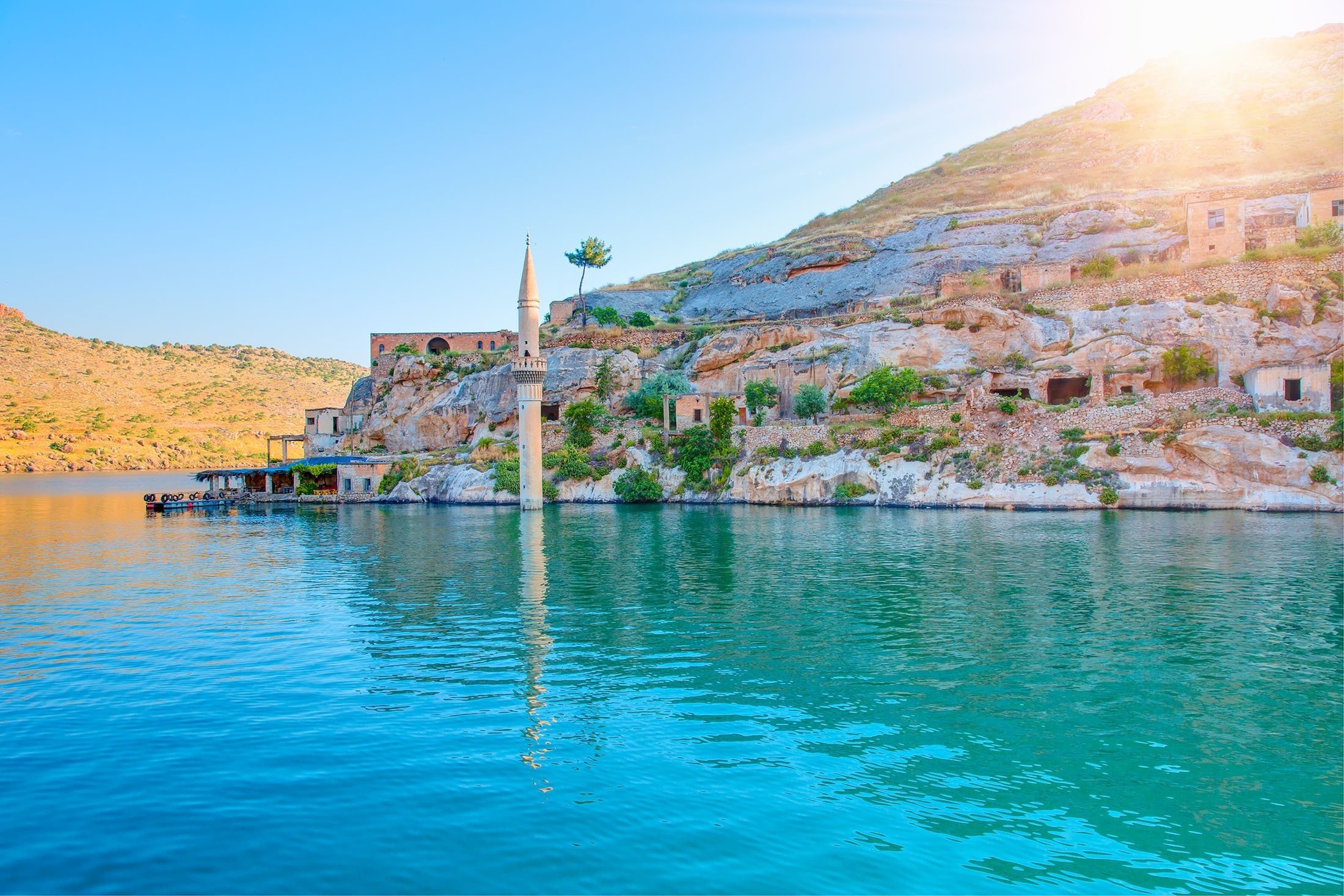© Turkuvaz Haberleşme ve Yayıncılık 2026
Gaziantep made its name known to the whole world with the ancient city of Zeugma, however, it is also home to many urban legends thanks to its multi-layered cultural makeup. These stories help protect the legacy of this city located on the historical silk road, with some tales based on reality while others are urban myths.
I had a chance to discover some of the local stories that have been passed down through the generations on my trip to Gaziantep as narrated by our tour guide, Ali Haydar Bozdoğan, an English teacher and Gaziantep local whose roots are grounded in the city.
On the other hand, as an Istanbulite, the stillness of the city fascinated me. While traveling to the sites with scenic beauty and historical importance along the route, short pistachio trees line both sides of the road, giving the land a unique look. The pistachios from these trees are harvested every two years. Since the harvest year is considered a time of abundance, local couples who are planning to get married wait for that specific period, believing that it is lucky, Bozdoğan said.
Inspired by his narrations throughout my visit, here is a compilation of the most revisited stories in the region.
The ancient city of Zeugma has been home to many civilizations and served as a great center for research in ancient world history due to its strategic geographic location.
Zeugma, meaning "bridge or crossing," was one of the easiest places to cross the Euphrates River, according to Bozdoğan's narration. Established as twin towns on either side of the river connected by a wooden bridge, Zeugma was originally founded by Seleucus I Nicator, one of the generals of Alexander the Great. Since the settlement was located on the Silk Road, it quickly became a trade center.
In the first century B.C., the city was given to the Commagene kingdom as a dowry when Mithridates I Kallinikos married the daughter of the Seleucid king, Laodice.
With villas overlooking the Euphrates, bustling river trade and a lively social scene, Zeugma became a center of attraction and the largest city of the time. The city experienced its golden period under Roman rule when it had both financial wealth and military power.
The merchants, military commanders and wealthy people who settled here built many villas on the terraces above the Euphrates. To decorate them, highly skilled artists used colored stones from the river to create floor mosaics depicting scenes from mythology and painted the walls with frescoes. When they were unable to obtain the color they wished to use, the masters went so far as to extract colors from the petals of flowers growing locally.

The sunken city of Halfeti located in the city of Şanlıurfa on the other side of the river is also the source of urban legends. According to Bozdoğan, the name Halfeti is derived from two Turkish names, Halil and Fatma, who fell in love with each other. The legend goes that these two young people fell in love but their families opposed their marriage. Seeing no other choice, Halil and Fatma decide to jump into the Euphrates, ending their lives together hand in hand. Over time, Halil and Fatma's names merge, forming the word Halfeti.
Yet, the sunken city has more impossible love stories to reveal. The other is tied to the famous black rose of Halfeti.
According to the legend, there was at one point a young man named Ali who lived in the Gaziantep region, on the other side of the river, and he would keep different types of birds of enthralling colors. One day, one of the birds flies away to the other side, leading Ali to a fascinating rose garden. In the garden, Ali sees a beautiful Armenian girl tending to the roses, Vartuhi, the daughter of stone master Asadur. These two young people of different religions fall in love but Asadur strongly opposes their unification. Seeing no choice but to end their lives, Vartuhi and Ali give themselves to the cold waters of the river. Legend has it, the moment they died, roses turned black due to their grief. These flowers only bloom in a particular period of the year.
Bozdoğan also noted that some sources mention say Asadur was the architect of the half-sunken Ulu Mosque.
As you enter the city, you come across many signs reading "Slow down! You are in Halfeti" as the city is famous for its serenity and slow pace.

Rumkale at the confluence of the Merziman Stream and Euphrates River is a majestic place that mesmerizes its visitors. It is very difficult to distinguish between the stone's natural formation and the human work in this hand-carved rock.
While the Assyrians understood the importance of Rumkale, the historical buildings remaining today stem from the Hellenistic and Roman periods. Later, Rumkale served as the home of the Armenian bishop in the 1200s.
However, the biggest urban tale about the place is that Johannes, one of Jesus' apostles, came here during the Roman period and reproduced the copies of the Bible in a carved room made of rock.

When visiting the preservation center, Mustafa Çulcuoğlu aims to raise awareness among visitors about bald ibis birds, which are in danger of extinction and unique to the region. Çulcuoğlu, who is also an honorary hunting inspector, monitors the bald ibis with a telescope around the Euphrates Basin station and voluntarily feeds and gives water to the animals.
"The bald ibis has been living in Mesopotamia for thousands of years. A pair was in Noah's Ark, heralding the coming of the spring and abundance," said Çulcuoğlu while highlighting the importance of these unique birds.
Çulcuoğlu explains that the bald ibis is featured in the animal depiction found in Göbeklitepe, which is featured on the UNESCO World Heritage List and considered "ground zero" of human history. The Egyptian deity "Thoth" was often depicted as an ibis as the animal was sacred to him. Also, the bird appears on the mosaics that were unearthed in the ancient city of Zeugma.
The introduction of dichlorodiphenyltrichloroethane, commonly known as DDT, a colorless, tasteless, and almost odorless crystalline chemical compound used in farming against pests, caused a decline in the numbers of this ancient bird. The bald ibis feeds on pests and insects and thus got poisoned, causing a huge decline in their population. In addition, these migratory birds are also at risk of being hunted along their migration routes.
For this reason, the Turkish government created the bald ibis preservation center so the species can live in peace before being released into nature every Feb. 14 to nest.
Calling on all citizens, Çulcuoğlu invites everyone to nature.
